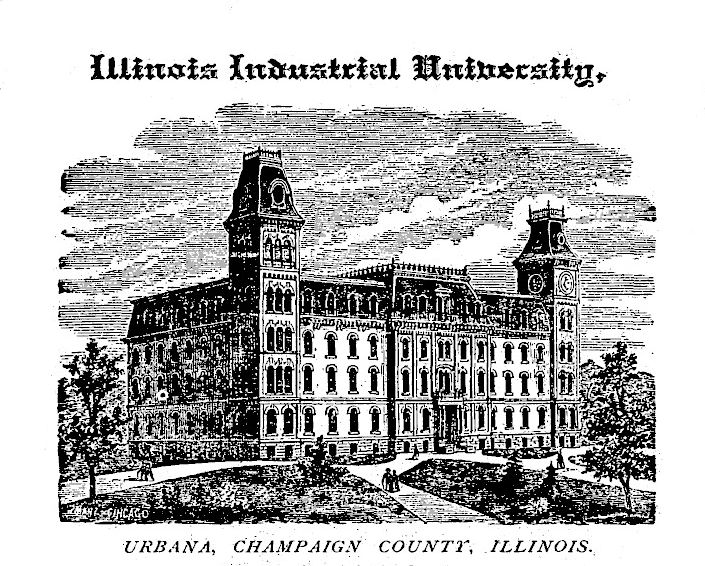|
Karl Folkers
Karl August Folkers (September 1, 1906 – December 7, 1997) was an American biochemist who made major contributions to the isolation and identification of bioactive natural products. Career Folkers graduated from the College of Liberal Arts and Sciences at the University of Illinois in 1928. In 1986, the institution awarded him its Alumni Achievement Award. His career was mainly spent at Merck. He played a prominent role in the isolation of vitamin B12 in 1947, which is one of the most structural complex of the vitamins. As a Merck Pharmaceuticals research team, Folkers, Fern P. Rathe, and Edward Anthony Kaczka were the first to isolate the antibiotic cathomycin in 1955. His team also isolated the antibiotic cycloserine. In 1958 his Merck team determined the structure of coenzyme Q10. He later served as director of the Institute of Biomedical Research at the University of Texas at Austin, where he was also Ashbel Smith Professor of Chemistry. In recognition for his scienti ... [...More Info...] [...Related Items...] OR: [Wikipedia] [Google] [Baidu] |
Decatur, Illinois
Decatur ( ) is the largest city in Macon County, Illinois, United States, and its county seat. The city was founded in 1829 and is situated along the Sangamon River and Lake Decatur in Central Illinois. As of the 2020 United States census, 2020 census, it had a population of 70,522. It is the List of municipalities in Illinois, 17th-most populous city in Illinois and the sixth-most populous outside the Chicago metropolitan area. Decatur has an economy based on industrial and agricultural commodity processing and production. The city is home to Millikin University and Richland Community College. History 19th century The city is named after War of 1812 naval hero Stephen Decatur. The Potawatomi Trail of Death passed through the city in 1838. Post No. 1 of the Grand Army of the Republic was founded by Civil War veterans in Decatur on April 6, 1866. Decatur was the first home in Illinois of Abraham Lincoln, who settled just west of Decatur with his family in 1830. At the age of 2 ... [...More Info...] [...Related Items...] OR: [Wikipedia] [Google] [Baidu] |
University Of Illinois
The University of Illinois Urbana-Champaign (UIUC, U of I, Illinois, or University of Illinois) is a public university, public land-grant university, land-grant research university in the Champaign–Urbana metropolitan area, Illinois, United States. Established in 1867, it is the founding campus and Flagship#Colleges and universities in the United States, flagship institution of the University of Illinois System. With over 59,000 students, the University of Illinois is one of the List of United States public university campuses by enrollment, largest public universities by enrollment in the United States. The university contains 16 schools and colleges and offers more than 150 undergraduate and over 100 graduate programs of study. The university holds 651 buildings on and its annual operating budget in 2016 was over $2 billion. The University of Illinois Urbana-Champaign also operates Research Park at the University of Illinois Urbana-Champaign, a research park home to innova ... [...More Info...] [...Related Items...] OR: [Wikipedia] [Google] [Baidu] |
Vitamin Researchers
Vitamins are organic molecules (or a set of closely related molecules called vitamers) that are essential to an organism in small quantities for proper metabolic function. Essential nutrients cannot be synthesized in the organism in sufficient quantities for survival, and therefore must be obtained through the diet. For example, vitamin C can be synthesized by some species but not by others; it is not considered a vitamin in the first instance but is in the second. Most vitamins are not single molecules, but groups of related molecules called vitamers. For example, there are eight vitamers of vitamin E: four tocopherols and four tocotrienols. The term ''vitamin'' does not include the three other groups of essential nutrients: minerals, essential fatty acids, and essential amino acids. Major health organizations list thirteen vitamins: * Vitamin A (all-''trans''-retinols, all-''trans''-retinyl-esters, as well as all-''trans''- β-carotene and other provitamin A carotenoid ... [...More Info...] [...Related Items...] OR: [Wikipedia] [Google] [Baidu] |
National Medal Of Science Laureates
National may refer to: Common uses * Nation or country ** Nationality – a ''national'' is a person who is subject to a nation, regardless of whether the person has full rights as a citizen Places in the United States * National, Maryland, census-designated place * National, Nevada, ghost town * National, Utah, ghost town * National, West Virginia, unincorporated community Commerce * National (brand), a brand name of electronic goods from Panasonic * National Benzole (or simply known as National), former petrol station chain in the UK, merged with BP * National Book Store, a bookstore and office supplies chain in the Philippines * National Car Rental, an American rental car company * National Energy Systems, a former name of Eco Marine Power * National Entertainment Commission, a former name of the Media Rating Council * National Motor Vehicle Company, Indianapolis, Indiana, USA 1900–1924 * National Radio Company, Malden, Massachusetts, USA 1914–1991 * National Su ... [...More Info...] [...Related Items...] OR: [Wikipedia] [Google] [Baidu] |
1997 Deaths
This is a list of lists of deaths of notable people, organized by year. New deaths articles are added to their respective month (e.g., Deaths in ) and then linked below. 2025 2024 2023 2022 2021 2020 2019 2018 2017 2016 2015 2014 2013 2012 2011 2010 2009 2008 2007 2006 2005 2004 2003 2002 2001 2000 1999 1998 1997 1996 1995 1994 1993 1992 1991 1990 1989 1988 1987 1986 Earlier years ''Deaths in years earlier than this can usually be found in the main articles of the years.'' See also * Lists of deaths by day * Deaths by year (category) {{DEFAULTSORT:deaths by year ... [...More Info...] [...Related Items...] OR: [Wikipedia] [Google] [Baidu] |
1906 Births
Events January–February * January 12 – Persian Constitutional Revolution: A nationalistic coalition of merchants, religious leaders and intellectuals in Persia forces the shah Mozaffar ad-Din Shah Qajar to grant a constitution, and establish a national assembly, the National Consultative Assembly, Majlis. * January 16–April 7 – The Algeciras Conference convenes, to resolve the First Moroccan Crisis between French Third Republic, France and German Empire, Germany. * January 22 – The strikes a reef off Vancouver Island, Canada, killing over 100 (officially 136) in the ensuing disaster. * January 31 – The 1906 Ecuador–Colombia earthquake, Ecuador–Colombia earthquake (8.8 on the Moment magnitude scale), and associated tsunami, cause at least 500 deaths. * February 7 – is launched, sparking a Anglo-German naval arms race, naval race between Britain and Germany. * February 11 ** Pope Pius X publishes the encyclical ''Vehementer Nos'', de ... [...More Info...] [...Related Items...] OR: [Wikipedia] [Google] [Baidu] |
Science History Institute
The Science History Institute is an institution that preserves and promotes understanding of the history of science. Located in Philadelphia, Pennsylvania, it includes a library, museum, archive, research center and conference center. It was founded in 1982 as a joint venture of the American Chemical Society and the University of Pennsylvania, as the Center for the History of Chemistry (CHOC). The American Institute of Chemical Engineers (AIChE) became a co-founder in 1984. It was renamed the Chemical Heritage Foundation (CHF) in 1992, and moved two years later to the institution's current location, 315 Chestnut Street in Old City. On December 1, 2015, CHF merged with the Life Sciences Foundation, creating an organization that covers "the history of the life sciences and biotechnology together with the history of the chemical sciences and engineering." As of February 1, 2018, the organization was renamed the Science History Institute, to reflect its wider range of histori ... [...More Info...] [...Related Items...] OR: [Wikipedia] [Google] [Baidu] |
Coenzyme Q10
Coenzyme Q10 (CoQ10 ), also known as ubiquinone, is a naturally occurring biochemical cofactor (coenzyme) and an antioxidant produced by the human body. It can also be obtained from dietary sources, such as meat, fish, seed oils, vegetables, and dietary supplements. CoQ10 is found in many organisms, including animals and bacteria. CoQ10 plays a role in mitochondrial oxidative phosphorylation, aiding in the production of adenosine triphosphate (ATP), which is involved in energy transfer within cells. The structure of CoQ10 consists of a benzoquinone moiety and an isoprenoid side chain, with the "10" referring to the number of isoprenyl chemical subunits in its tail. Although a ubiquitous molecule in human tissues, CoQ10 is not a dietary nutrient and does not have a recommended intake level, and its use as a supplement is not approved in the United States for any health or anti-disease effect. Biological functions CoQ10 is a component of the mitochondrial electron trans ... [...More Info...] [...Related Items...] OR: [Wikipedia] [Google] [Baidu] |
Cycloserine
Cycloserine, sold under the brand name Seromycin, is a GABA transaminase inhibitor and an antibiotic, used to treat tuberculosis. Specifically it is used, along with other antituberculosis medications, for active drug resistant tuberculosis. It is given by mouth. Common side effects include allergic reactions, seizures, sleepiness, unsteadiness, and numbness. It is not recommended in people who have kidney failure, epilepsy, depression, or are alcoholics. It is unclear if use during pregnancy is safe for the baby. Cycloserine is similar in structure to the amino acid D-alanine and works by interfering with the formation of the bacteria's cell wall. Cycloserine was discovered in 1954 from a type of '' Streptomyces''. It is on the World Health Organization's List of Essential Medicines. Medical uses Tuberculosis For the treatment of tuberculosis, cycloserine is classified as a second-line drug. Its use is only considered if one or more first-line drugs cannot be used. ... [...More Info...] [...Related Items...] OR: [Wikipedia] [Google] [Baidu] |
Cathomycin
Novobiocin, also known as albamycin, is an aminocoumarin antibiotic that is produced by the actinomycete ''Streptomyces niveus'', which has recently been identified as a subjective synonym for ''S. spheroides'' a member of the class Actinomycetia. Other aminocoumarin antibiotics include clorobiocin and coumermycin A1. Novobiocin was first reported in the mid-1950s (then called streptonivicin). Clinical use It is active against ''Staphylococcus epidermidis'' and may be used to differentiate it from the other coagulase-negative ''Staphylococcus saprophyticus'', which is resistant to novobiocin, in culture. Novobiocin was licensed for clinical use under the tradename Albamycin (Upjohn) in the 1960s. Its efficacy#Pharmacology, efficacy has been demonstrated in Clinical trial#Pre clinical studies, preclinical and Clinical trial, clinical trials. The oral form of the drug has since been withdrawn from the market due to lack of efficacy. A combination product of novobiocin and tetrac ... [...More Info...] [...Related Items...] OR: [Wikipedia] [Google] [Baidu] |
Fern P
The ferns (Polypodiopsida or Polypodiophyta) are a group of vascular plants (plants with xylem and phloem) that reproduce via spores and have neither seeds nor flowers. They differ from mosses by being vascular, i.e., having specialized tissues that conduct water and nutrients, and in having life cycles in which the branched sporophyte is the dominant phase. Ferns have complex leaves called megaphylls that are more complex than the microphylls of clubmosses. Most ferns are leptosporangiate ferns. They produce coiled fiddleheads that uncoil and expand into fronds. The group includes about 10,560 known extant species. Ferns are defined here in the broad sense, being all of the Polypodiopsida, comprising both the leptosporangiate ( Polypodiidae) and eusporangiate ferns, the latter group including horsetails, whisk ferns, marattioid ferns, and ophioglossoid ferns. The fern crown group, consisting of the leptosporangiates and eusporangiates, is estimated to have originated in t ... [...More Info...] [...Related Items...] OR: [Wikipedia] [Google] [Baidu] |





